
I often hear from students in our cooking classes about the foods they say they don’t like. When I hear this, my next question is always “What don’t you like about it?” As a nutritional chef, I run into this often as I encourage people to try foods that generally fall under the “health food” category. I've found that lots of people have had these items cooked improperly or only one way throughout childhood, so now they find these foods grotesque. One of the most common of these foods is mushrooms!
Your average market will carry white button mushrooms, creminis and portobellas. Fun fact: all three of them are the same type of mushroom just at different stages of growth. As grocery stores expand their produce departments, you may also see shitake mushrooms, maitake mushrooms, oyster mushrooms, beech mushrooms, and even trumpet mushrooms occasionally.
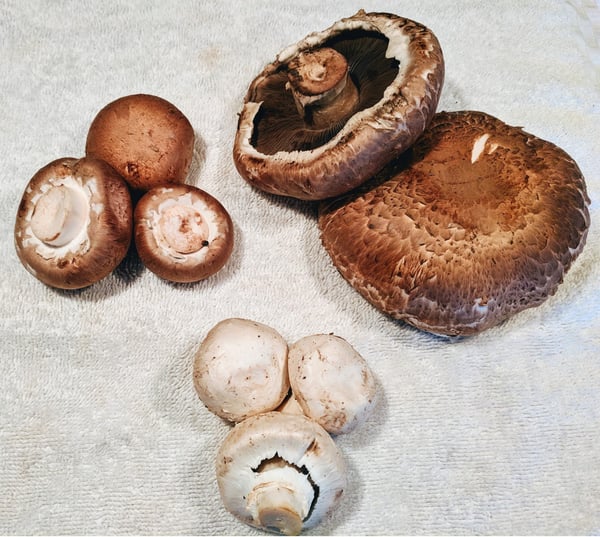
All mushrooms are not created equally! There are thousands of different mushrooms in the world and although some are edible, there so many that are not. I do not encourage anyone to start eating the ones on your lawn. I myself began foraging a few years ago and even with a proper identification guide, I am still only able to eat maybe 5% of what I find, as the risk is too great. Mushrooms are a type of fungi and the side effects of eating them can be anywhere from a yummy treat, to a psychedelic evening, all the way to sickness and death. I assure you that the mushrooms you find at the grocery store and you see on a menu at restaurants are safe and when they are cooked properly, you may just fall in love with them.
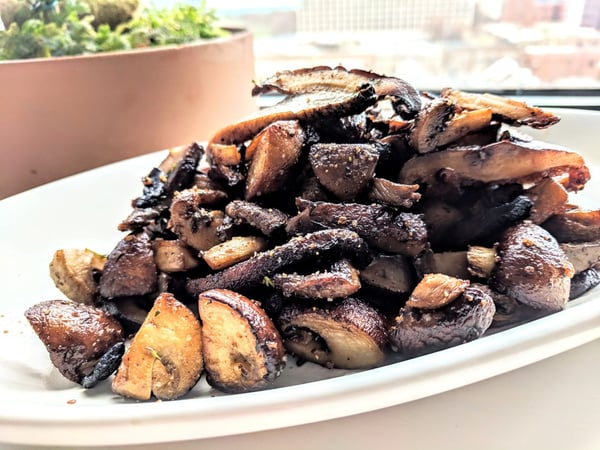
In many households, mushrooms have developed a bad rap as gray, soggy, wet and generally flavorless food. This is a shame because when properly cooked the flavor and texture they can bring to the table is astounding. On average, mushrooms are comprised of about 92% water and the remaining 8% is split between carbohydrates, amino acids (protein), and a multitude of vitamins and minerals (especially the B vitamins). This is exactly what makes mushrooms so hard to cook, and yet it is also what makes them so delicious when cooked properly. Although they are made of mostly water, it is their uniquely high amount (after water is evaporated) of both carbohydrate and amino acids that gives them the perfect balance for Maillard browning. There is a difference between caramelization and Maillard browning. Caramelization is only the breakdown of carbohydrates to create a sweet rich flavor. Maillard browning is the breakdown of amino acid and carbohydrates together which creates a multitude of unique molecules. These molecules are often used to describe the flavor of Umami.
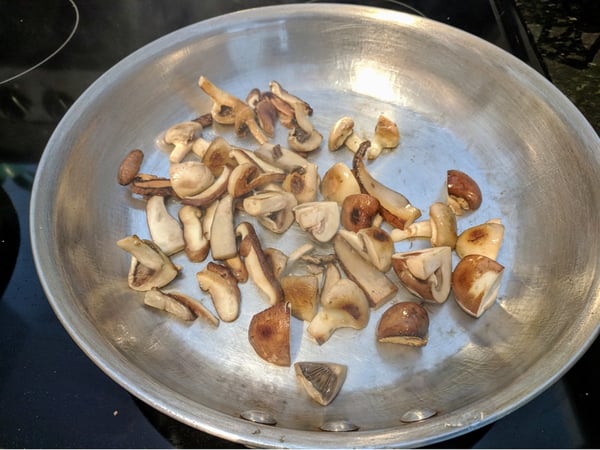
When mushrooms encounter heat, they begin releasing the water at a fast rate. The trick is, you need to be able to cook the mushrooms in a way that will evaporate the water fast enough that it doesn’t pool and begin dropping the temperature of your pan. When you maintain that high heat (preferably above 330°F) you create a depth of flavor.
Side note: water evaporates at 212°F and when a pan is overloaded with water it will plummet its temperature from the 400-600°F you want to be cooking at in a sauté pan.
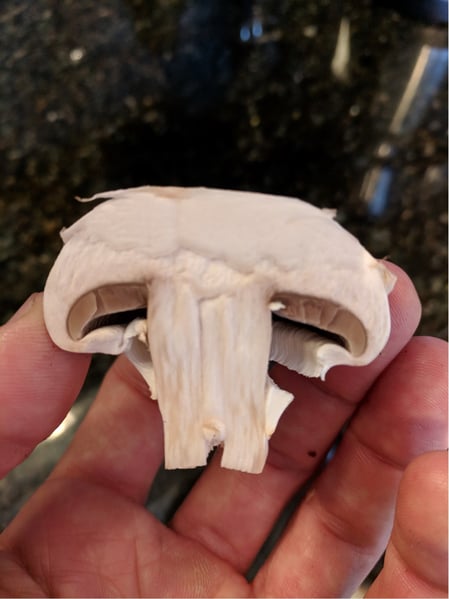
When you look at most mushrooms you will notice they are made up of three primary parts. Think of an umbrella, the dome shaped top is the cap, the handle/ shaft is the stem, and the space inside of the cap is where the mushroom's gills are. For most mushrooms you are fine to eat the stem but as they get larger in size, like on a portobella, the stem tends to get stringy and fibrous, so for big mushrooms, I will remove the stem.
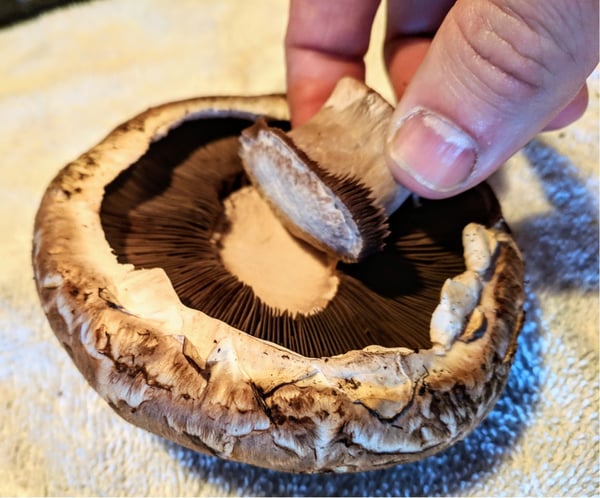
Some mushrooms, like trumpet mushrooms, the stem is the main part that you want to eat. Shitake mushrooms have stems that are fibrous and woody so removing them is best, however they can be roasted and added to a stock for great flavor. With the smaller mushrooms like button or cremini mushrooms, I will leave the stem. The same goes for the gills. In smaller mushrooms it's not worth removing the gills. In shitake, oyster, maitake, and beech mushrooms, the gills are light in color and more attached to the cap which means we do not need to remove them. Portabellas on the other hand you always want to take a spoon and scrap the gills out because they are dark, bitter, and hold a lot of water without adding any desirable flavor.
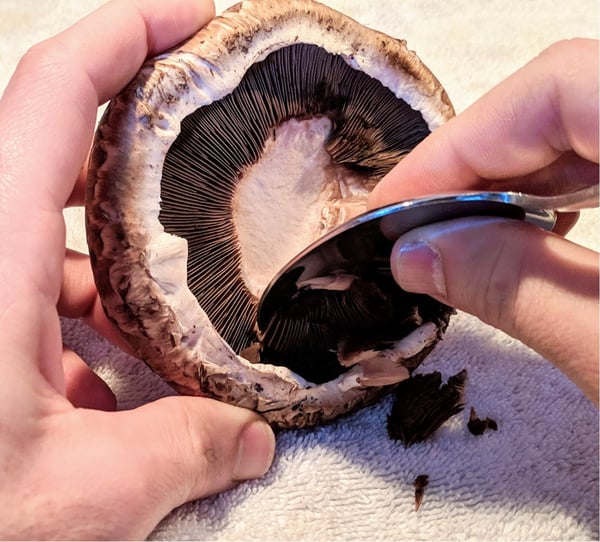
Once you have prepped your mushrooms the right way, you will then be deciding how to cut them. The type of mushroom and the cooking technique will have a lot to do with this. The main idea is that you don’t want to cut them so thick that you only get a little browning on the outside, because the more water you remove and surface area you get browned, the better the flavor. However, you don’t want to cut them so thin that you amplify the surface area too much for the pan you are cooking them in.
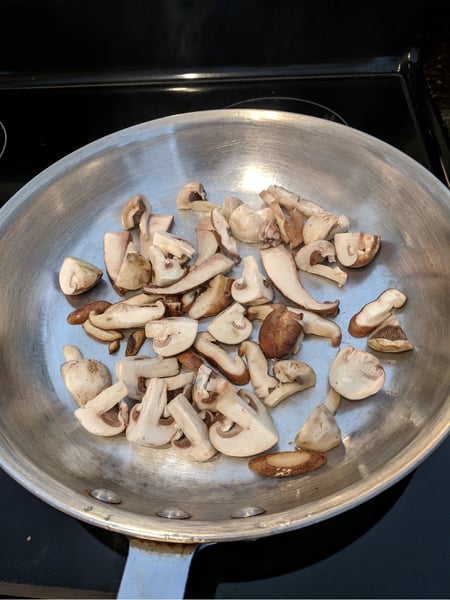
Roasting
My favorite way to cook mushrooms is high temperature roasting. I will usually quarter or 1/4-inch slice my mushrooms, toss them in a little oil salt and pepper, and oven roast them on a sheet pan at 425°F.
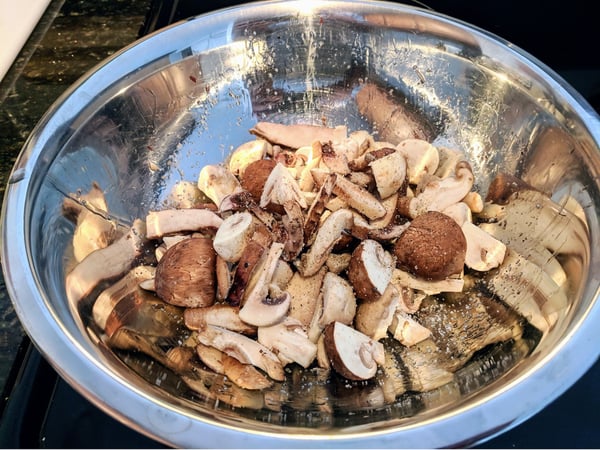
This temperature is high enough to evaporate the water that is released at a rapid rate which allows the mushrooms to get a beautiful dark brown color on them. The key is to make sure you do not overcrowd the pan and to be sure not to cut or slice them too small.
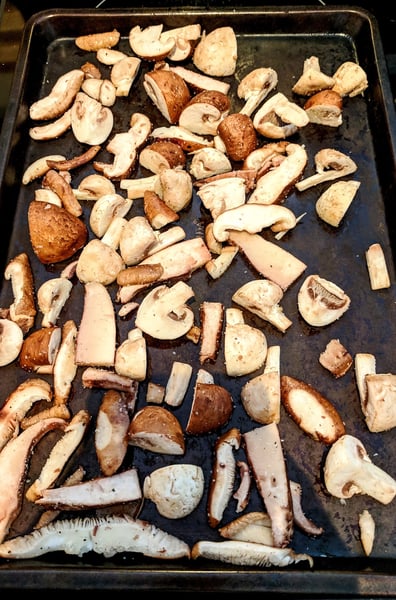
If you are trying for a thin sliced mushroom, which will make a much crunchier texture, you will need to spread them out even more. If you look and see that there is water pooling around the pieces on the sheet pan or there is a lot of stem coming out of the oven when you open the door, you will want to raise the temperature or switch to broiling to help evaporate the excess water rapidly to fix the issue.
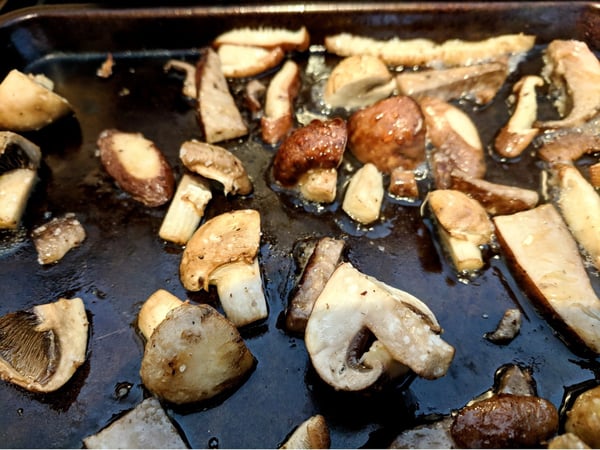
Pan Searing/Sautéing
When cooking mushrooms on the stove top, you need to get your pan hot! You will want to use cast iron or a good quality stainless steel pan and put it on high heat with no oil in it at first. I let my pan get so hot that little wisps of smoke begin to appear (this is called bluing, when the residual oils on the pan begin burning) and then, only at this point, I will add my high temp oil (really anything but olive oil). After I add the oil, I will wait 30 seconds and then add the mushrooms, allowing them to spread out in the pan is best so that you don’t over crowd your pan and only steam them. Remember residual water in the pan drops the cooking temp and will provoke water to come out faster than it can evaporate. Stop stirring the mushrooms. If you just let them cook and only stir them after you begin seeing a little brow creeping around the edge up the sides of the pieces you will have a much better product. Every time you stir them you are hitting a new area on the mushroom on a hot surface and yet again increasing the amount of water in the pan. The last thing is, do not salt your mushrooms until they have cooked at least 75% of the way. This is because salt pulls moisture out of vegetables and we don’t want this to happen until we have achieved most of our browning.
After I have finished cooking my mushrooms most of the time, I will set them to the side and cook the remainder of my meal in the same pan and then mix in my mushrooms at the last second or just toss them on top after plating.
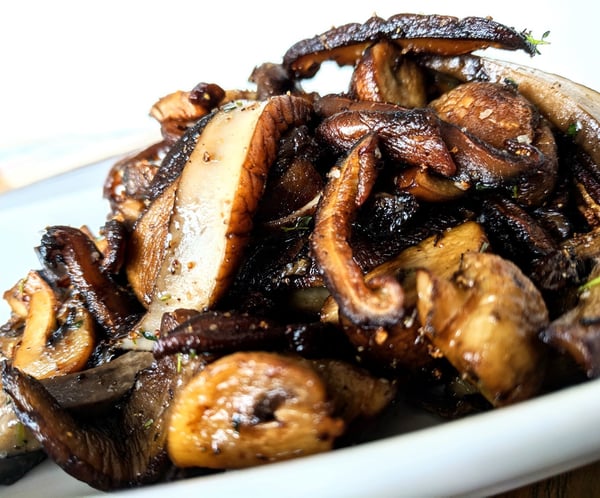
Check out The Chopping Block's Owner/Chef Shelley Young's method for cooking mushrooms in this video:
Shelley also loves to forage mushrooms and is somewhat of a mushroom fanatic like me, so be sure to check out her other posts:
- How to Cook Maitake or Hen of the Woods Mushrooms
- How to Dry and Preserve Morel Mushrooms
- How to Cook Chicken of the Woods Mushrooms
You can also learn how to work with mushrooms in any of these upcoming hands-on cooking classes at The Chopping Block:

